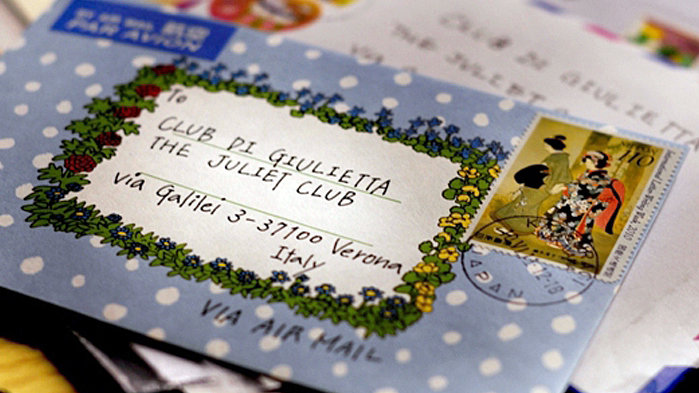
It might just be the most basic, primal, natural human phrase…“I love you,” but not everything crosses cultural and linguistic lines. Peculiar regional quirks, cuisine, art, and (most certainly) language – diverge in different parts of the world.
Yet love knows no boundaries. Love in different languages is an interesting study of how different people and cultures convey warmth, empathy, and passion.Since Pimsleur learners share a natural love of language, we decided to bring you a deep dive into how the word “love” came to be, discuss different words for love in other languages, speak to traditions around the globe, and – of course – list the ways to say “I love you” in different languages!
The Universal Language of Love Across Cultures
Ancient Greece was one of the first civilizations to make widespread use of the written language. Whenever you think of “I love you” in different languages, you can thank those Athenians and Spartans of yesteryear for laying the groundwork for expressing love.
The ancient Greeks had four words for love, eros, agape, philia, and storgé. Philia is the word for the sort of love one shares with one’s friends, but also describes a strong fondness for certain activities. Its root is the suffix –phil– which specifies an attraction or affinity toward something. You’ll recognize it from words such as hemophilia, which literally means “an affinity toward bleeding profusely.”
Storgé is specifically the sort of instinctual affection that is shared between family members or a person and their pet. Agape is more of a selfless and unconditional, spiritual love.
And eros is passionate, carnal romantic love. Eros is also the name of the Greek god of love, whose Roman counterpart you’ll recognize as Cupid.These ancient Greek words would be used as a blueprint of sorts for all languages that developed afterward, especially in Europe and Western Asia.
History of Love in English
We could certainly use some of these more descriptive words in the English language! We only have one word for love; from the proto-indo european root leubh – which meant “to care, desire.” We have absorbed some words from other languages to expand upon that feeling for example, amorous, from Old French amoros, from Latin amor and passion, from Latin passio, meaning “to suffer.”
Exploring Unique Words for Love in Other Languages
The equivalent word for eros in the Hindu and Buddhist tradition is kama, which you’ll recognize from the title of the Kamasutra, an ancient Sanskrit text on sexuality, eroticism, and emotional fulfillment.
In Arabic, the word is عشق (pronounced eishq), and in some Islamic traditions, it is thought to be the feeling that inspired creation itself. Arabic has many other words for various types of love, including حب (habb), which you’ll recognize from the words حبيب (habib) and حبيبي (habibi), terms of endearment for a man or a woman, respectively.
The Hebrew word חֶסֶד (chesed), is used to speak of love or kindness from or towards God or between people. It’s also one of the 10 emanations of the tree of life in the Kabbalistic tradition.
In Romanian, the word dragoste is used, and it describes both familial love, romantic love, affection, and endearment.
In Czech, milovat is used, from the root word mily, meaning “kind or dear,” and the suffix –ovat which creates verbs out of nouns or adjectives. In Swahili, the word upendo is used, which is also a common name for boy children.
Love in the Pacific Islands
In the Māori language, there is the word aroha, which means “to have empathy for, to feel compassion for, to love or feel concern for.” The phrase murimuri aroha is an even deeper expression of that feeling or action of yearning, and includes the yearning one feels when one is in grief. The word whakaipo means, “to cherish, woo or treat with affection,” and one would probably whakaipo one’s taupuhi, or “beloved.”
In Hawaii, people use the word aloha as a greeting, but at the heart of that greeting is a deeper feeling of peaceful, loving friendship toward other people and toward and from the natural world.
In the Tamil language of Sri Lanka, there are over 40 nuanced words for love, that include words for unreciprocated love, delusion while in love, and even a specific word for the action of showing your love for someone by holding them in your arms.
Chinese Love Language
In China, the words for “I love you,” are 我爱你” (wǒ ài nǐ), but because the sentiment behind these words is so strong, they are not often used or spoken aloud. People tend to perform actions for each other to show their affection instead. Because the words for “I love you” and the number 520 sound very similar when spoken, there is a newer custom amongst younger people to text each other these numbers as a code for terms of affection.
Nordic Love Language
In many of the Nordic languages, the word for love is some variant of the word elske. This is reserved for only the most extreme of feelings, so generally, people use the terms jeg liker deg, which means, “I like you,” or, jeg er glad i deg, which means “I’m glad of you,” or “you make me happy.” The word kjære means “beloved” and in Norwegian, there is just one word for boyfriend or girlfriend, which is kjæreste.
Ways to Say “I Love You” in Different Languages

With that glimpse into the history of “love,” and a brief look at how different cultures look at the idea of love, it’s time to see a list of the many ways to say “I love you” in different languages. You’ll note that (surprise!) the Romance languages like French, Italian, and Spanish express love lyrically. Other languages may not sound as flowery to foreign ears when learning how to say “I love you” in different languages. It’s up to you whether you think the other expressions are more “lovely” than your own.
Regardless, here’s how love in different languages is expressed…enjoy!
- French – Je t’aime.
- Italian – Ti amo.
- Spanish – Te amo. Te quiero.
- German – Ich liebe dich.
- Portuguese (Brazil) – Eu te amo.
- Portuguese (Portugal) – Eu amo-te.
- Russian – я тебя люблю. (Ya tebya lyublyu.)
- Mandarin Chinese – 我爱你. (wǒ ài nǐ.)
- Cantonese Chinese – 我愛你. (ngóh oi néih.)
- Japanese – 愛してる. (aishiteru.)
- Korean – 사랑해. (Saranghae.)
- Tagalog – Mahal kita.
- Swahili – Nakupenda.
- Dutch – Ik hou van jou.
- Hebrew –
- male to female: אני אהב אתך (ani ohev otach)
- male to male: אני אהב אתכה (ani ohev otcha)
- female to male: אני אהבת אתכה (ani ohevet otcha)
- female to female: אני אהבת אתך (ani ohevet otach)
- Swedish – Jag älskar dig.
- Greek – Σ’αγαπώ. (S’agapo.)
- Norwegian – Jeg elsker deg.
- Farsi – دوستت دارم (Dootset daram.)
- Hindi –
- Spoken by a man: मैं तुमसे प्यार करता हूँ (main tumse pyaar kartaa hoon.)
- Spoken by a woman: मैं तुमसे प्यार करती हूँ (main tumse pyaar kartee hoon.)
- Pashto – .زه ستا سره مينه کوم (Za la ta sara meena kawom.)
BONUS!!21. Pig Latin – Iway ovelay ouyay.
Celebrating Love in Every Language

From Valentine’s Day to the end-of-year holidays, the phrase “I love you” never takes a break! And your own love of language has the perfect outlet with Pimsleur. We offer both Premium (one language) and All-Access (every Pimsleur language), so you can expand your knowledge across the globe.Share your passion for learning languages at Pimsleur.com; the perfect gift for a loved one or friend!
No Comments for "How To Say “I Love You” in Different Languages"